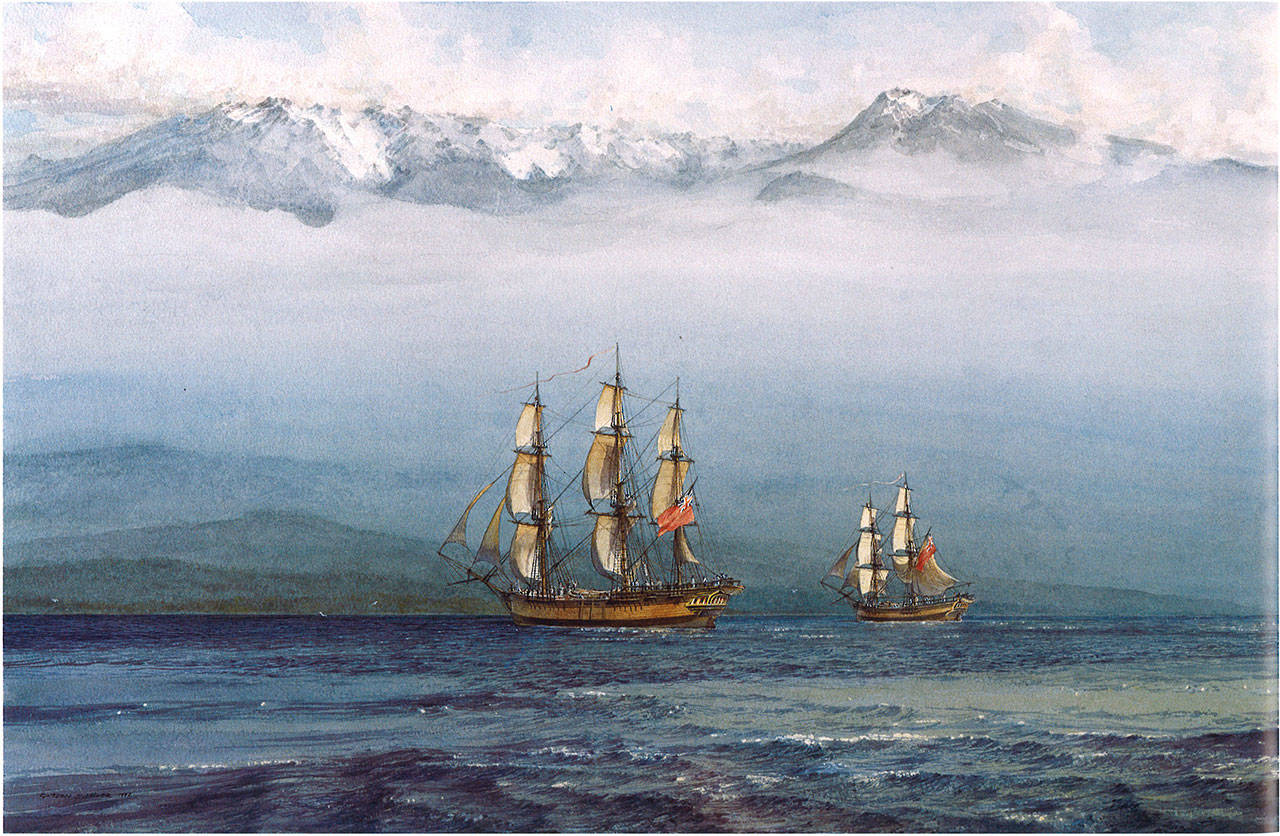During a lifetime spent on Ebey’s Prairie, Roger Sherman can’t recall seeing any tall ships in Admiralty Inlet.
He knows they pass through on occasion, just not when he happens to be looking.
He and his wife Darlene even have a view of the inlet from their home that rests on the prairie ridge.
“It’s a long ways away,” Sherman said of the water. “We see a lot of boats go through there. But we’re not looking that way all that much, so we miss a lot.”
The Shermans will be taking notice on Tuesday, June 13.
That afternoon roughly a dozen tall ships are scheduled, depending on weather conditions, to rendezvous for a commemorative parade of sail into Admiralty Inlet on the west side of Whidbey Island.
The tall ships — large, traditionally-rigged sailing vessels that were common in Puget Sound in the 19th century — will be bound for the 2017 Festival of Sail in Tacoma, which takes place June 15-18.
Lynn Hyde, a Coupeville resident who works for San Juan Island National Historical Park, contacted ship operators to arrange for the vessels to meet up and sail through Admiralty Inlet together.
The Festival of Sail in Tacoma, as well as the parade of sail in North Puget Sound, are intended to commemorate the 225th anniversary of Captain George Vancouver’s exploration of Puget Sound.
Vancouver claimed Puget Sound for Great Britain on June 4, 1792, naming it after one of his officers, Peter Puget.
On that date, he sailed his ships Discovery and Chatham into Saratoga Passage near Mukilteo, where he took possession of the Pacific Northwest — “New Georgia” — as a birthday gift for King George III.
Puget Sound didn’t become a part of U.S. territory until 1846.
“I’ve got 13 vessels that have signed on for this,” Hyde said. “But a lot of them are coming from other places. Everything is condition-dependent. If we really have bad weather, it could be six.”
The participating ships will rendezvous near McCurdy Point, east of Protection Island, near Port Townsend, then leave as close to 2 p.m. as possible, bound for Admiralty Inlet.
“Between 2 and 2:30 is ebb tide,” Hyde said. “They’re waiting for the water to carry them through instead of fighting the currents.”
Fort Casey State Park near Coupeville will mark Whidbey’s best viewing point, according to Hyde.
Unless weather complicates matters, the best time to be at the state park would be between 2:45-3:30 p.m.
Other parks off the island that will offer good vantage points would be Fort Worden at Point Wilson and Fort Flagler at Marrowstone Point.
A Discover Pass is required for vehicles in state parks.
Among the tall ships scheduled to pass through are the Lady Washington and Hawaiian Chieftain, coming from their home port in Aberdeen.
“I’m trying to get the Lady Washington to fire her guns every time they go by a state park,” Hyde said.
Two sailing vessels that call Penn Cove home — the Gatsby-era schooner Suva and 52-foot ketcy Cutty Sark — also will be headed to the Tacoma event.
Sherman, a retired farmer, has written a book about local maritime history titled, “The Sinking of the Calista, Part 1 of a Maritime History of Central Whidbey Island.” He’s working on part two, which includes a chapter on the massive number of vessels that pass through Admiralty Inlet.
“There’s a zillion boats going through of all sizes,” he said.
Sherman said he’s seen tall ships in Penn Cove, just not in Admiralty Inlet.
Others in his family have.
“My grandfather LeSourd was 12 years old when he moved here with his family in 1875,” Sherman said. “As he was growing up, he used to look across and see maybe eight or 12 square-riggers anchored up in the lee of Port Townsend. That’s where the customs port was.”
Later this month, Sherman said he figures he and his wife might be watching for them near Fort Casey.
“I might go to the campground. The gun emplacement is a little bit of a hike for me,” he said.
He said the water is deep enough that he hopes they’ll be coming in under sail.
“If they’re under sail they try to be careful not to come too close to shore,” Sherman said. “All the boats have engines now, but when they’re showing off, they don’t like to use them.”



